UPDATED 1/7/2025.
We sell four different styles of leather handles, which (unlike pulls) have two points of contact against the door, drawer, or cabinet surface for a sturdy connection. In this post, we'll share some of our best tips and tricks to help narrow down the search and choose the right style, size, and placement of handles for your furniture and kitchen remodels.
Table of Contents
Measure Center-to-Center (C2C) Spacing
Unlike a knob or pull with a single point of contact, a handle needs a measurement of the distance inbetween the two sets of hardware. That measurement is taken from the center of each hole, which is why it's called the "center-to-center" dimension (or C2C, as it's abbreviated in the biz).

When updating hardware on existing cabinetry, designers may be constrained by the locations of the existing holes in the cabinet surface, or they may need to carefully and artfully plug the holes and/or hide them strategically behind the handle itself.
When installing on new cabinetry that has no existing holes, designers have more flexibility and can choose the right pull for the right cabinet based on its function.
| Leather Handle | Recommended C2C Spacing |
| Flanders 3" | 3" (7.6cm) +/- 0.25" (0.6cm) |
| Flanders 3.5" | 3.5" (8.9cm) +/- 0.25" (0.6cm) |
| Flanders 4" | 4" (10.2cm) +/- 0.25" (0.6cm) |
| Hawthorne Small | 4.25" (10.8cm) +/- 0.25" (0.6cm) |
| Hawthorne Large | 9" (22.9cm) +/- 0.25" (0.6cm) |
| Hawthorne Wide | 9" (22.9cm) +/- 0.25" (0.6cm) |
| Sellwood Small | 9" (22.9 cm) +/- 0.5" / (1.2 cm) |
| Sellwood Large | 15" (38.1 cm) +/- 0.5" / (1.2 cm) |
| Tilikum Small | 4" (10.2cm) +/- 0.25" / (0.6cm) |
| Tilikum Medium | 5" (12.7cm) +/- 0.25" / (0.6cm) |
| Tilikum Large | 6" (15.2cm) +/- 0.25" / (0.6cm) |
Comfortable Clearance for Hands and Fingers
We have 4 styles of handles with two points of contact in our Leather Drawer Pull collection, and each projects off the surface of the cabinet differently, creating a different shape in the negative space between the cabinet surface and the handle surface.
The larger this "clearance" space is, the easier and more comfortable it is for the whole hand or fingers to go in and grab the handle. A large gripping space is critical for a big and heavy drawer or door, but may not be desirable at all on small or fine furniture. Additionally, there may be space constraints in tight spaces or awkward corners which make a large projection impractical.
As shown in this sketch:
- The Tilikum handle creates the most space, allowing for wider hand / finger space than the C2C. Note the gripping surface is two layers of leather riveted together for a sturdier construction and thicker grip.
- The Sellwood has the most lift off the cabinet surface for easy reaching in. It also has the widest grip area with a 1" dowel, perfect for larger hands.
- The Flanders and Hawthorne "Flat" have one layer of leather and is a good choice for tight spaces that need a less prominent handle, or for more delicate applications like small drawers and desktop furniture.

Gripping Surface: Size, Temperature, and Shape
Gripping surface is also an important consideration in handle selection: size as it relates to the scale of the application (cabinet/door/drawer), the "temperature" of the material choice, and shape as it relates to differently-sized hands.
Grip Size for Furniture Scale
Colloquially, the width between the C2Cs is measured in "fingers", which is a measurement that makes intuitive sense.
On a delicate or lightweight piece of furniture, only 1 finger might needed to comfortably open a drawer, but on an extra-wide and heavy kitchen drawer or a sliding barn door, the whole hand should be used.
The easiest way to know how big you'd like the handle is to close your eyes and imagine opening the drawer/door. Are you reaching with your whole hand, or just a couple fingers?


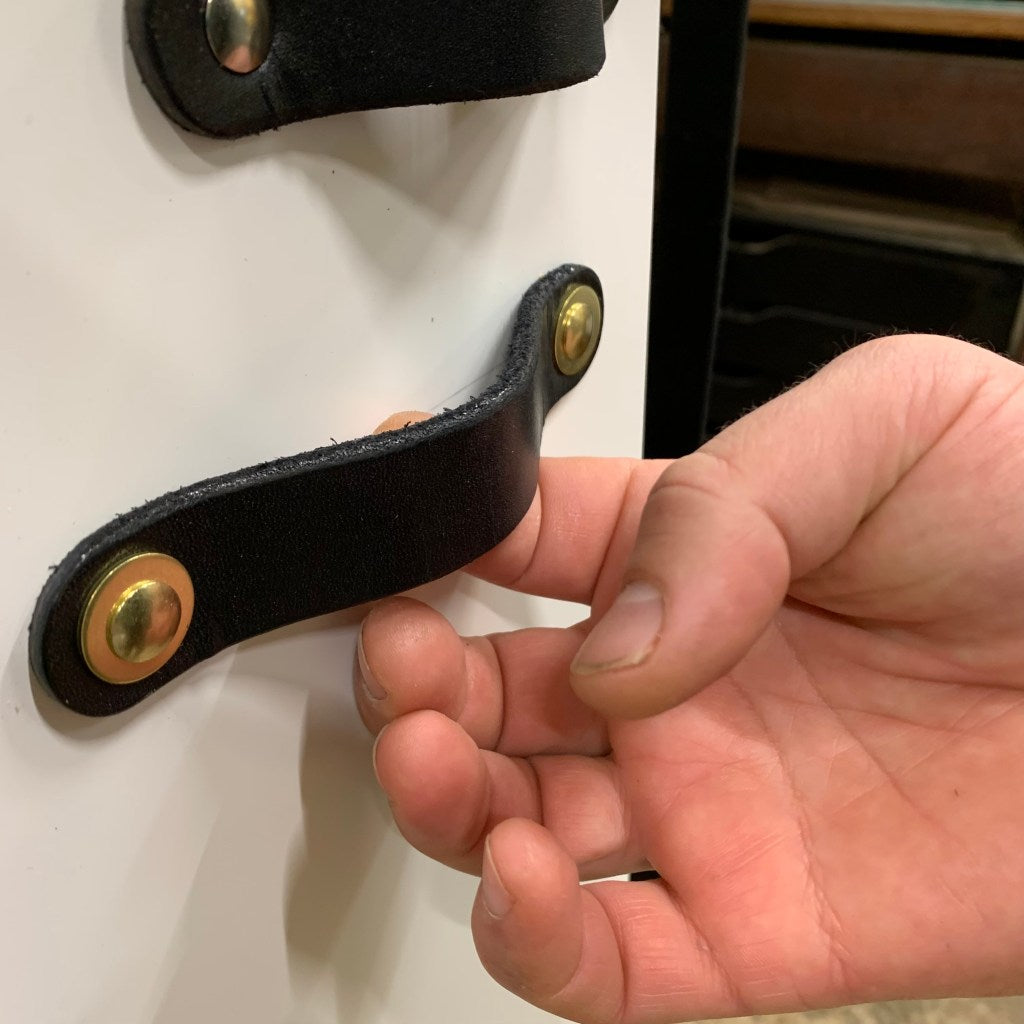
Material Temperature
Handles are, by their very nature, meant to be touched by the hands regularly, so the tactile experience of the surface should be a more-discussed consideration. Metal and glazed ceramic have been the handles of choice for a long time, but both feel cold to the touch.
The most regular and consistent feedback we hear from customers is how much they enjoy the warmth of leather and wood. It is often a surprise how impactful the comfortable touch of natural materials is: the feeling of everyday luxury.
Grip Shape for Differently Sized Hands
Different hands are different sizes, so measure your own hands and add some extra contingency to come up with a comfortable shape. Among our handle collection, the grip is quite different between the 1" round wood dowel on the Sellwood design, two layers of leather in the Tilikum design, and one layer of leather in the Flanders and Hawthorne "Flat".
Sometimes couples or family members will have dramatically differently-sized hands, which should be a consideration. One person with large hands may find a "1-finger" pull to be too small to be of practical use: in those cases, it is always better to err on the side of up-sizing.
Custom Sized Leather Handles
Yes! We can make custom sizes. Designing an entirely new style from scratch is a lengthy process, but modifying an existing handle design with these two dimensions is easily enough done for a custom order:
- The width of the strap. Typical dimensions we offer and stock are 1.25" (31.75mm), 1" (25.4mm), 3/4" (19mm) and 5/8" (15.9mm) but other widths are possible.
- The length of the strap to accommodate any desired center-to-center (C2C) hole spacing.
Contact us with your custom leather handle requests!
Bonus Video: How to Locate Leather Handles on the Door
Nobody explains it better than the experts at the PBS show, This Old House. This YouTube video has great tips and tricks for locating handles on doors and drawer surfaces.



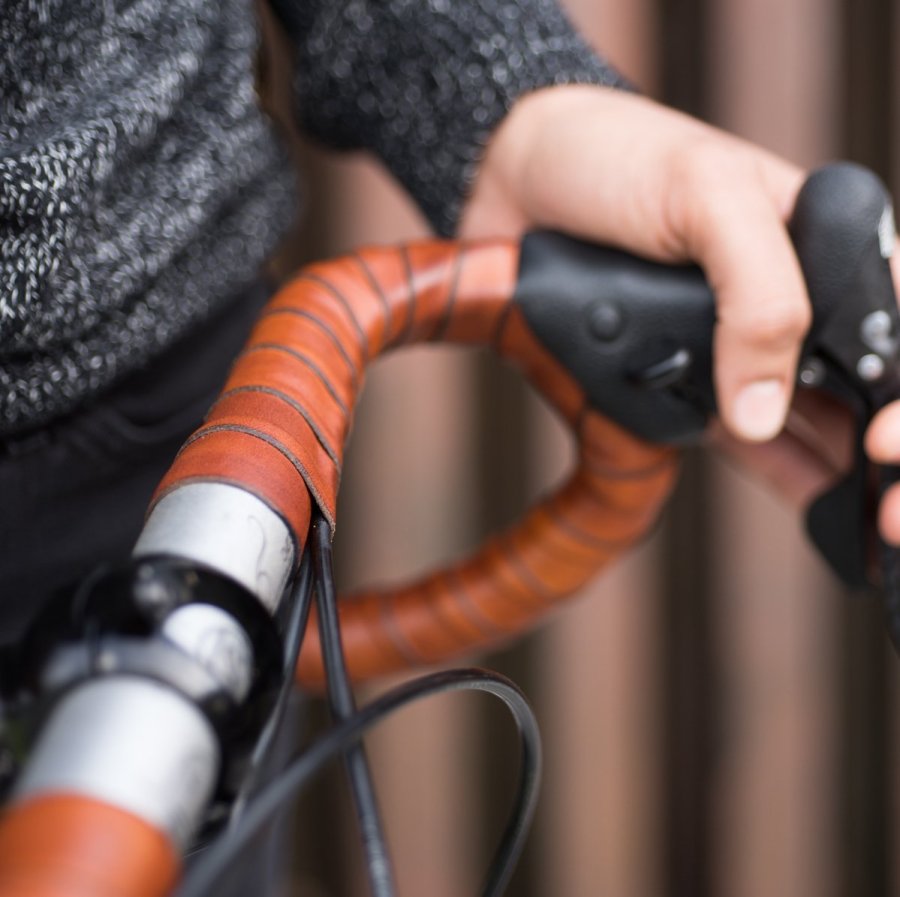
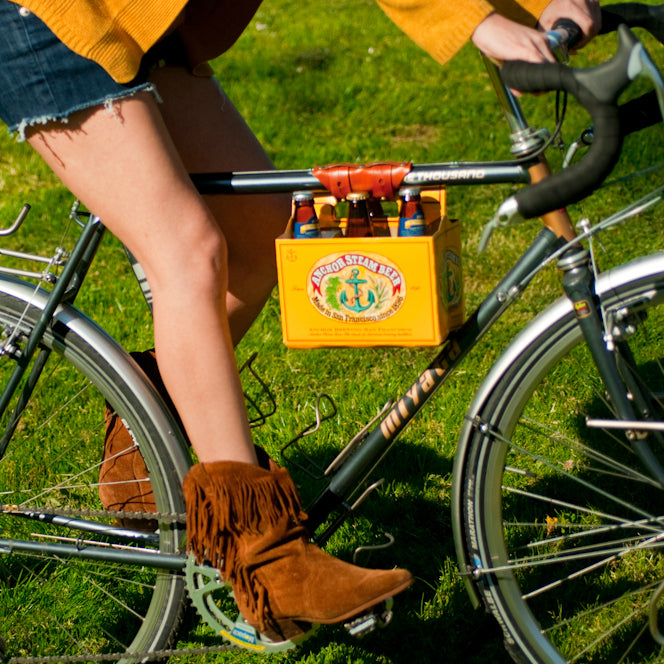
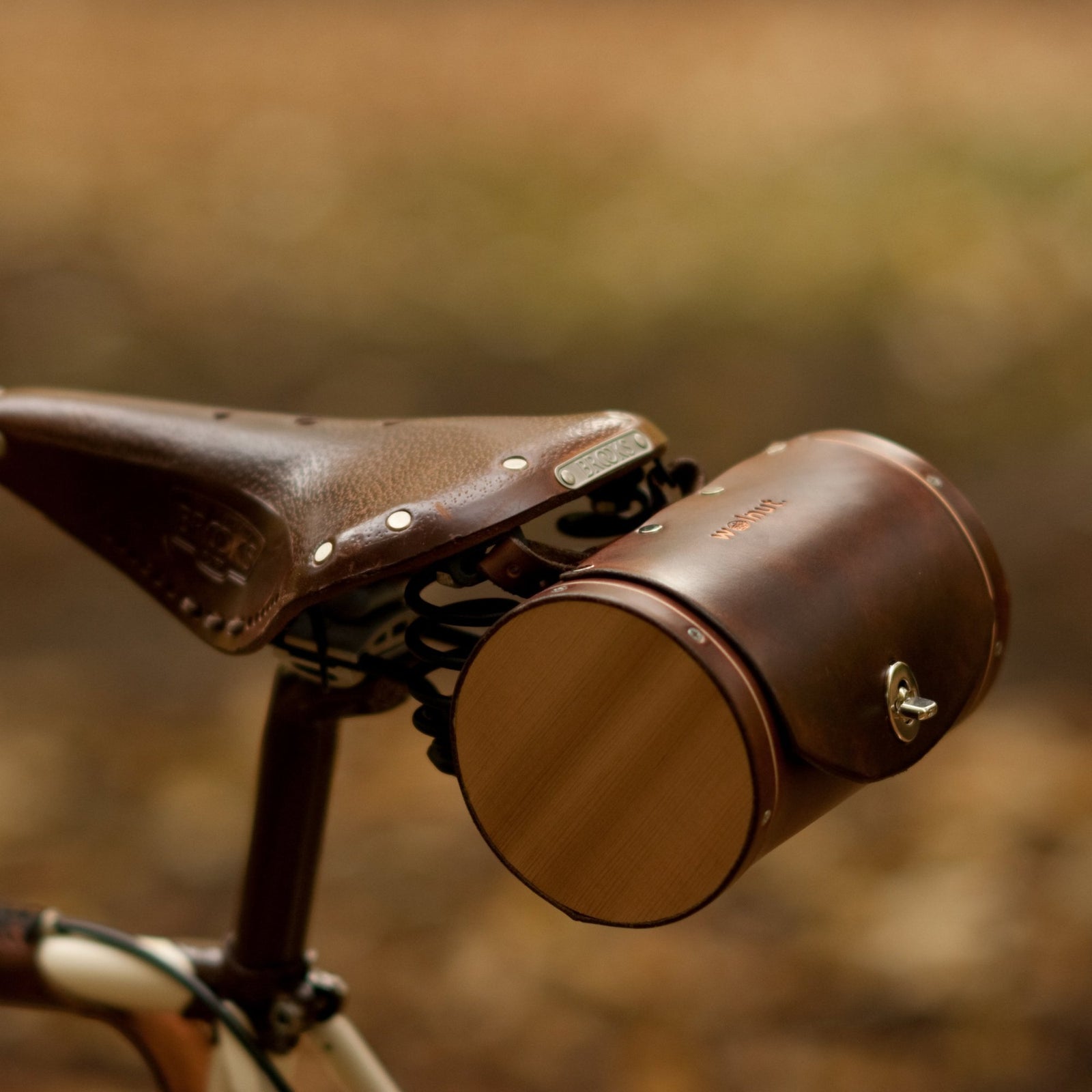
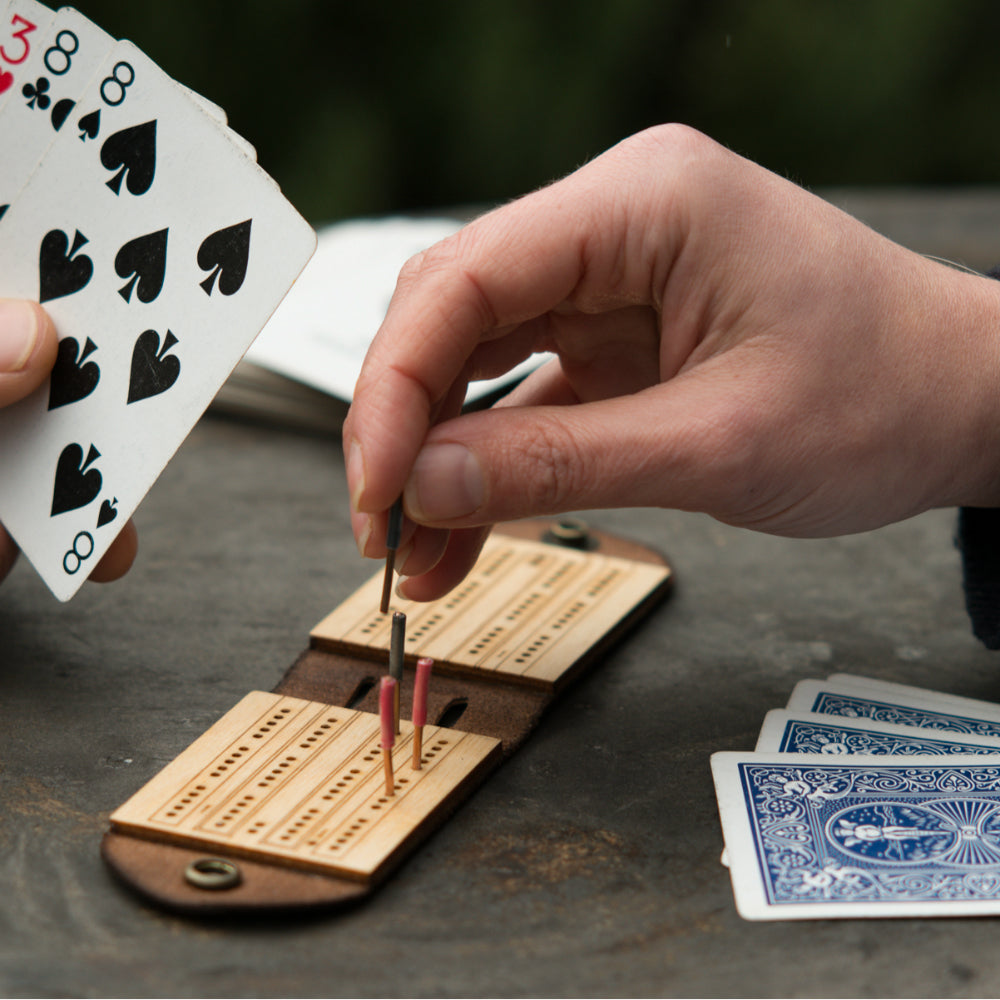
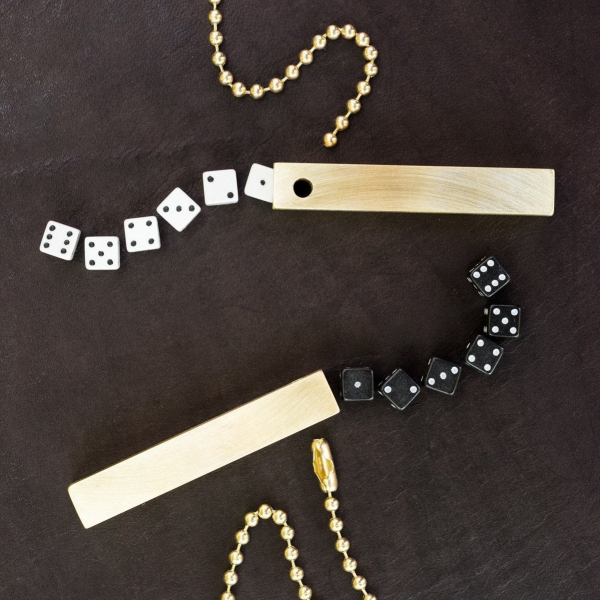
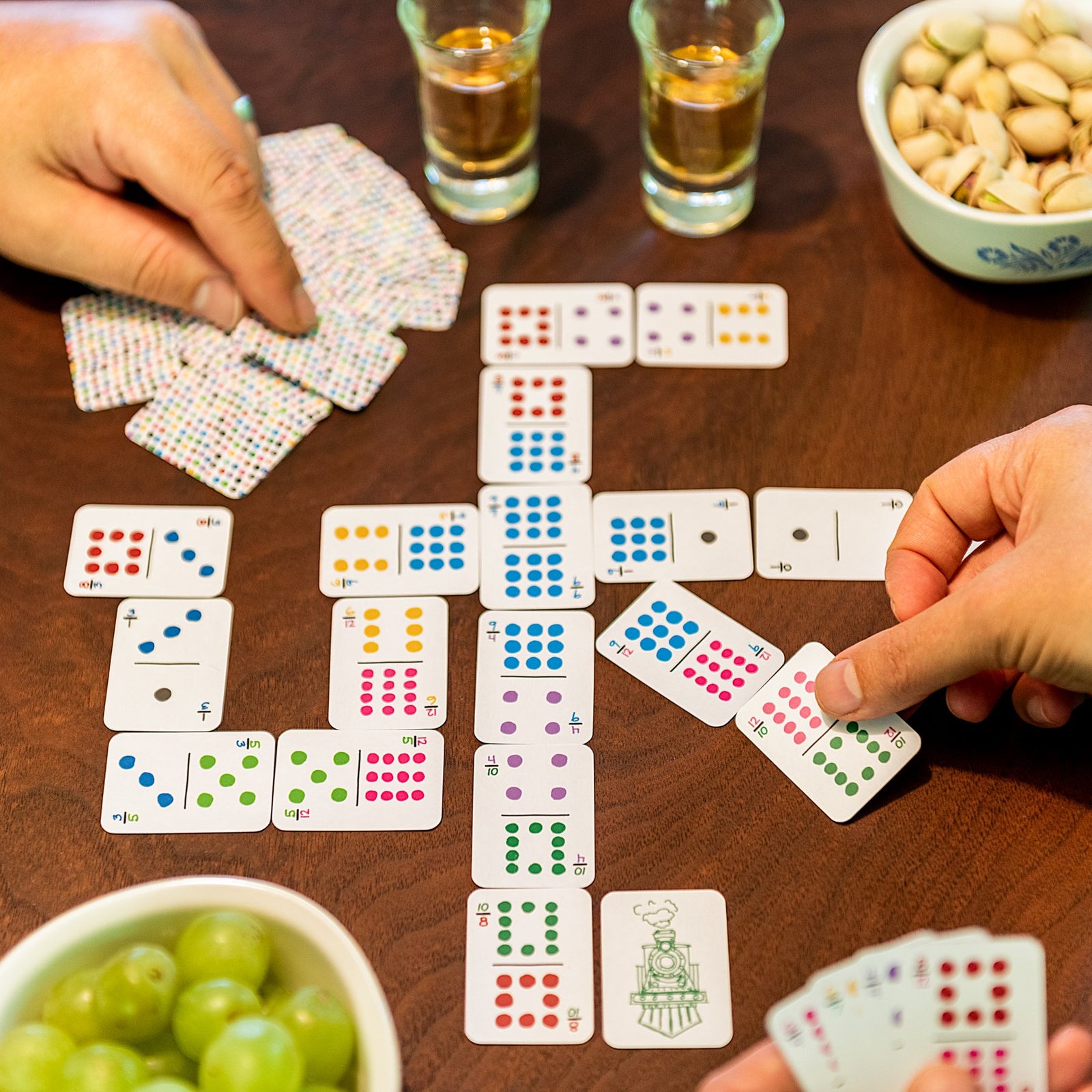
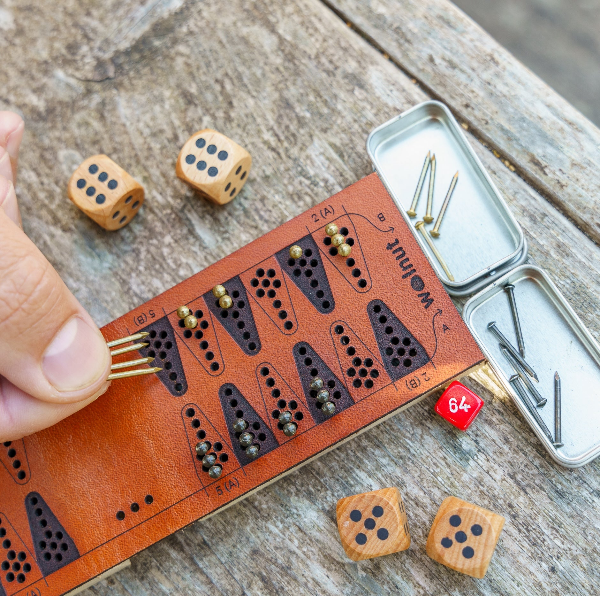
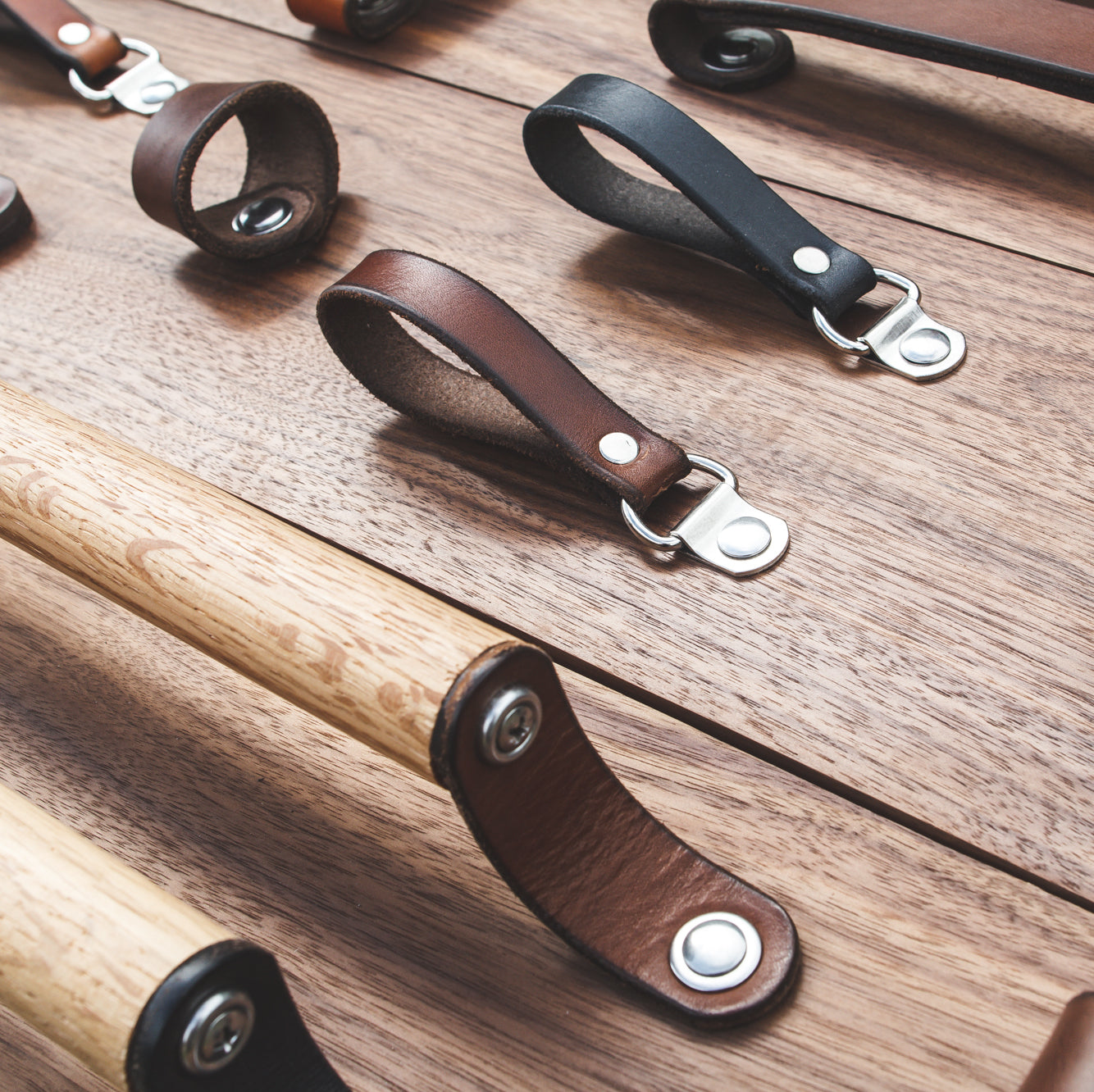
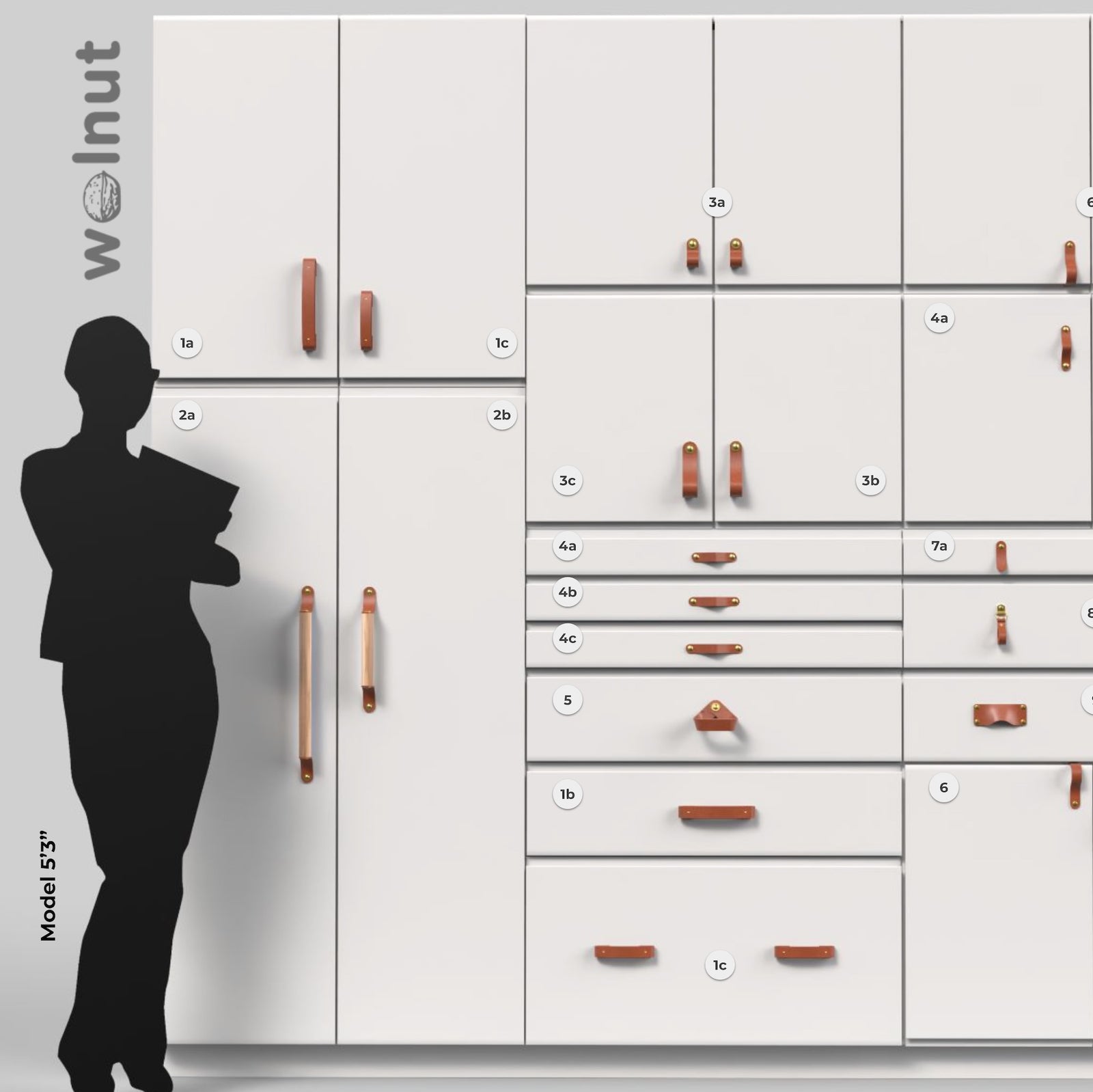
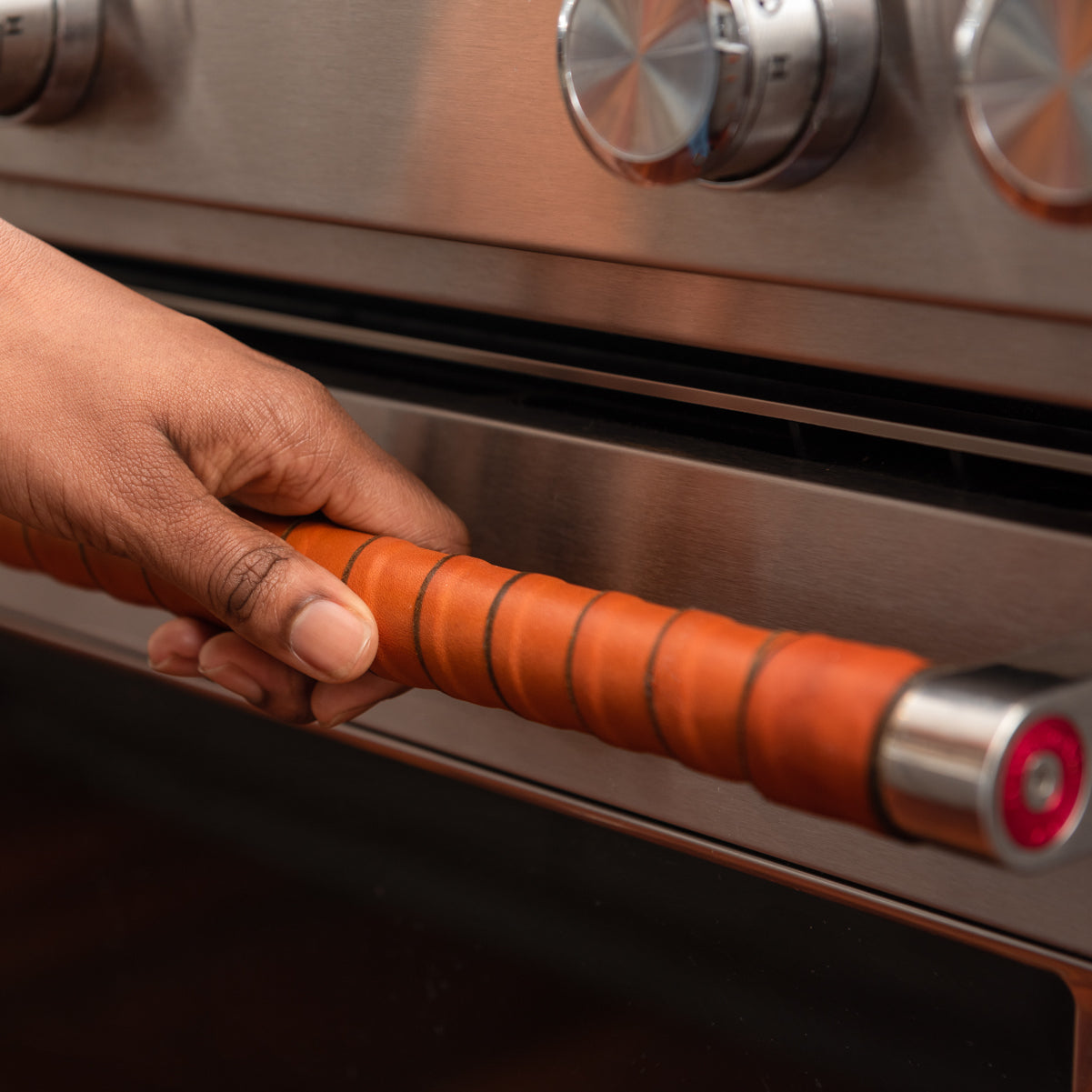
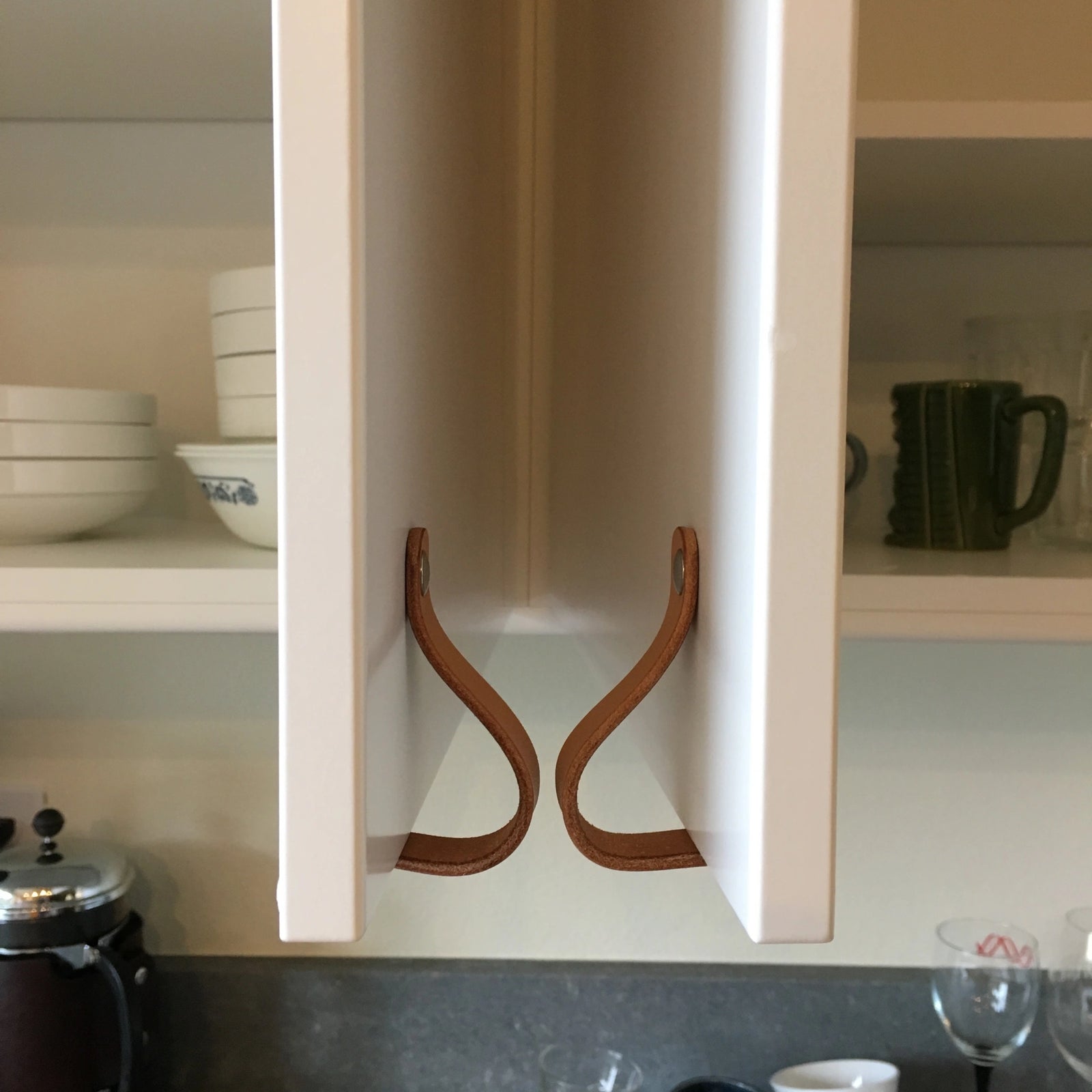


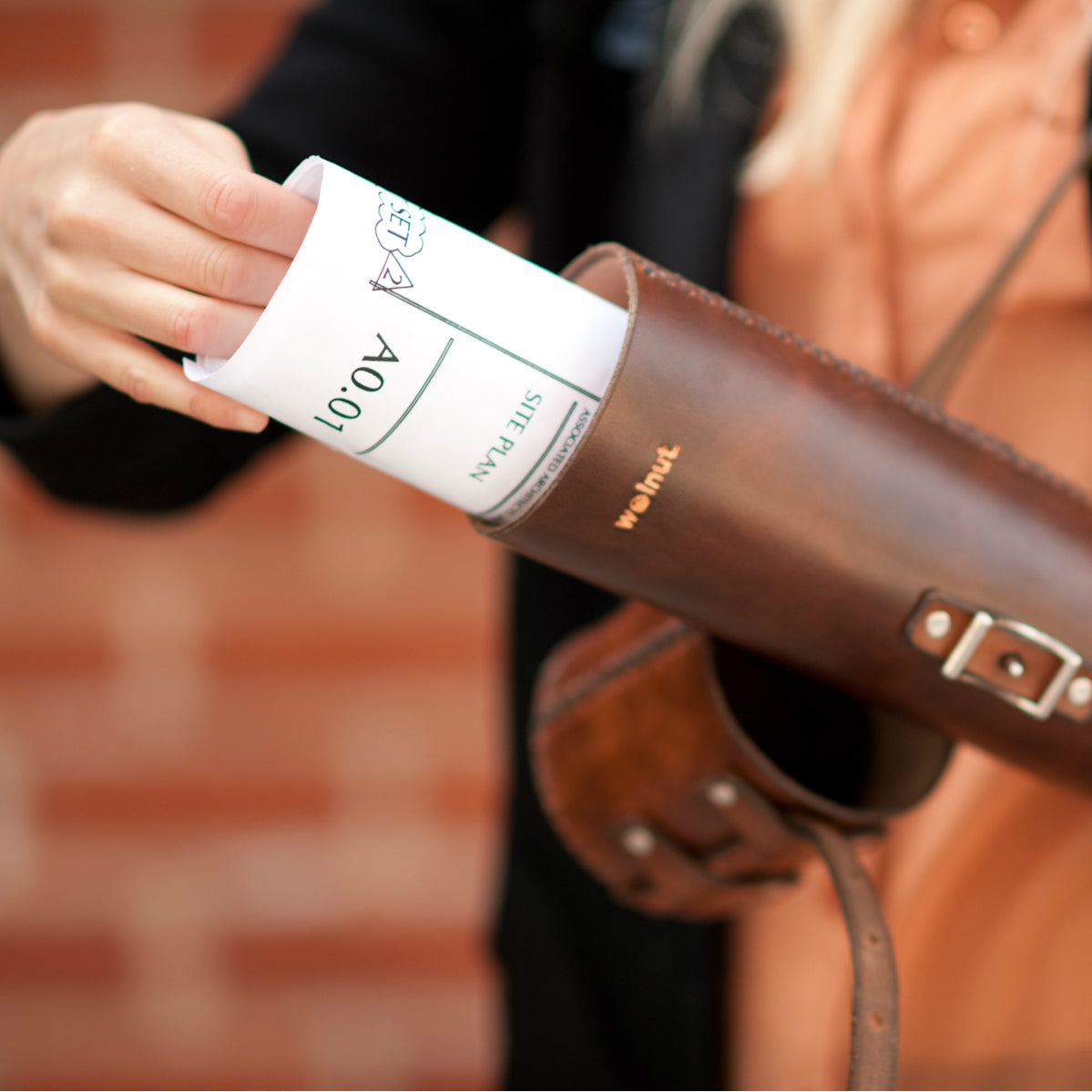
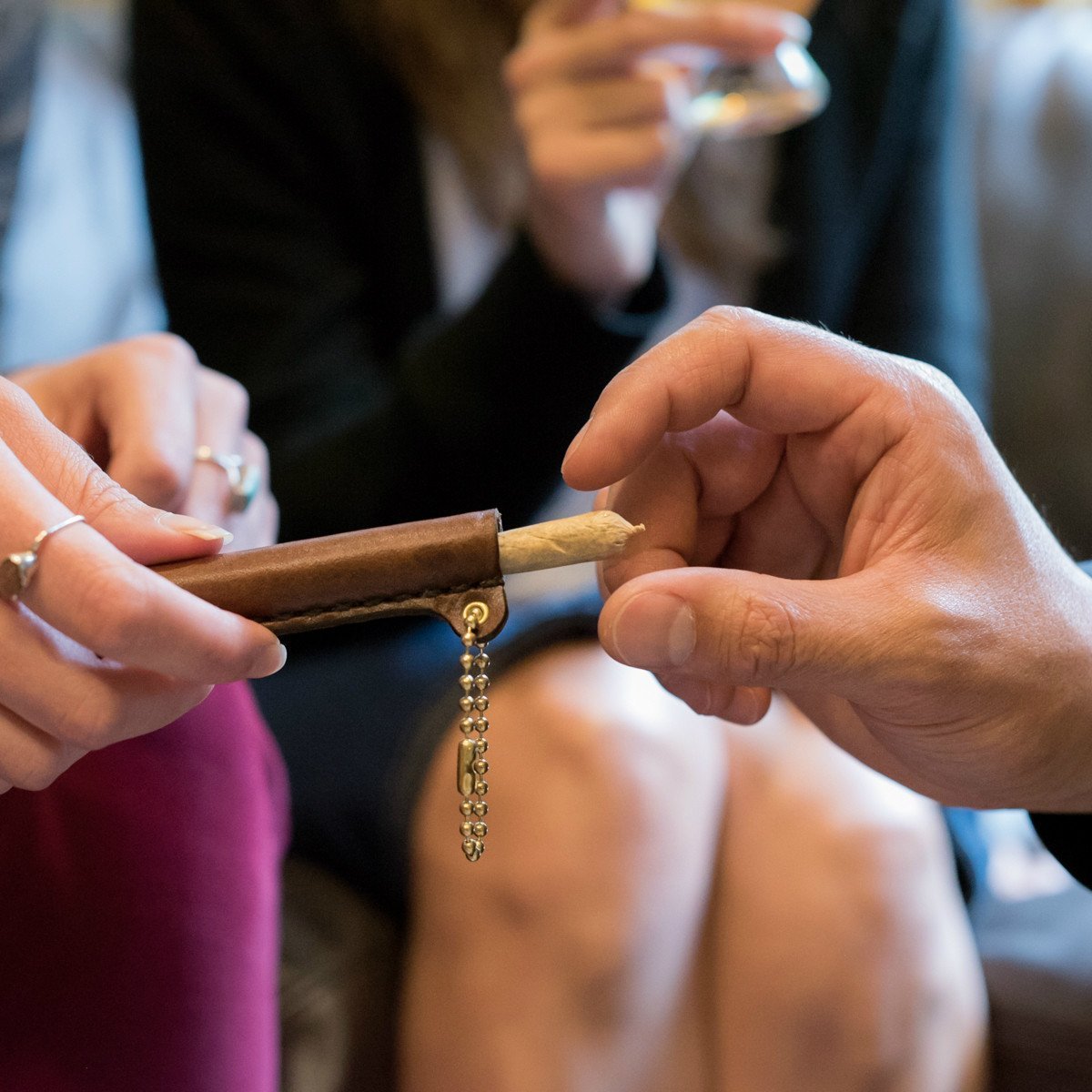
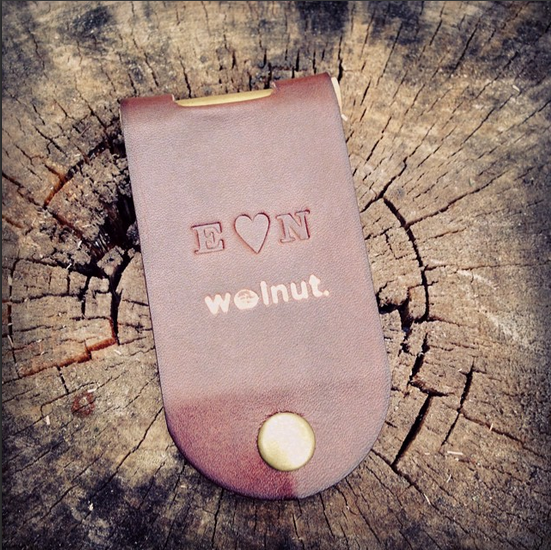
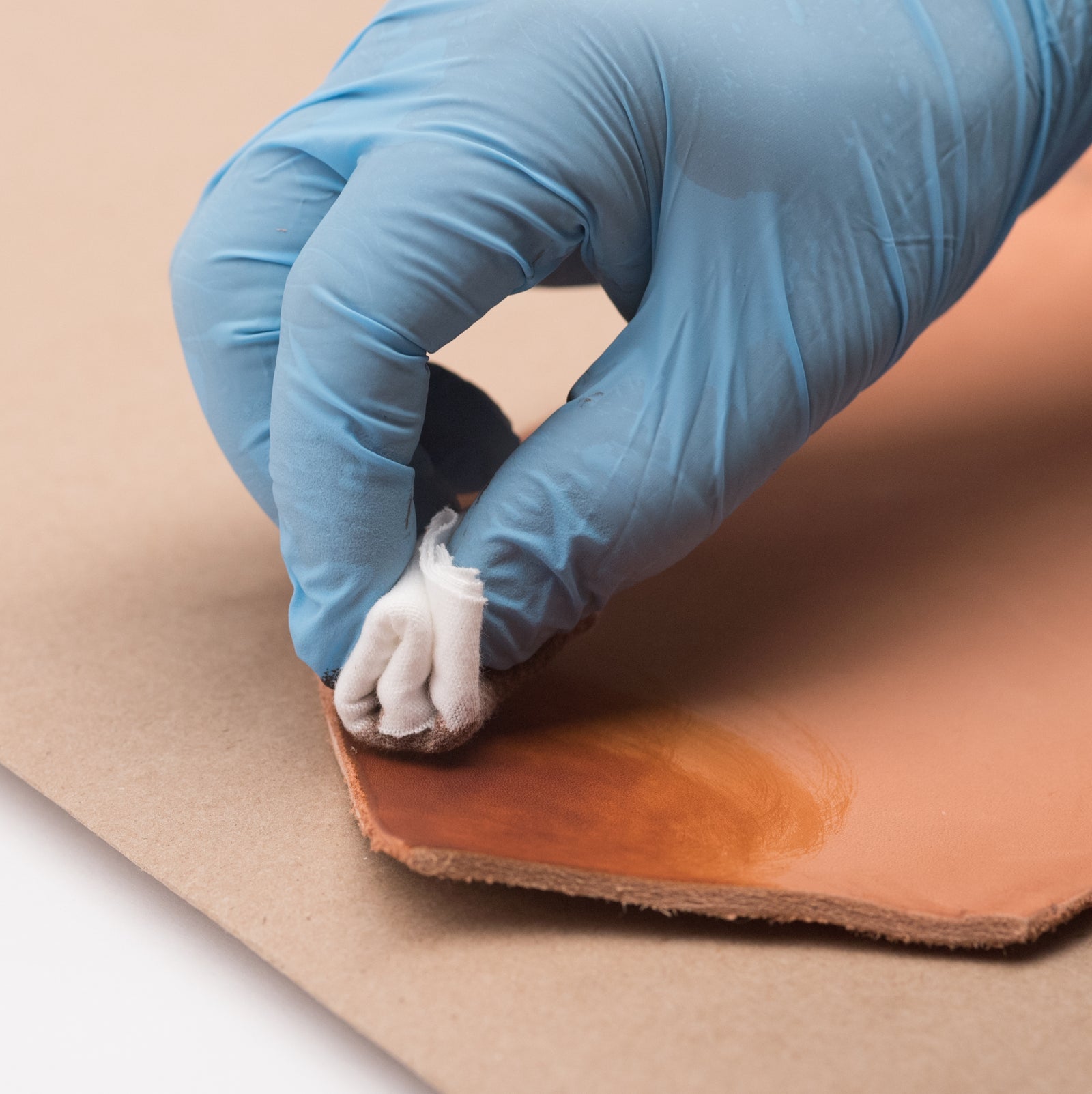

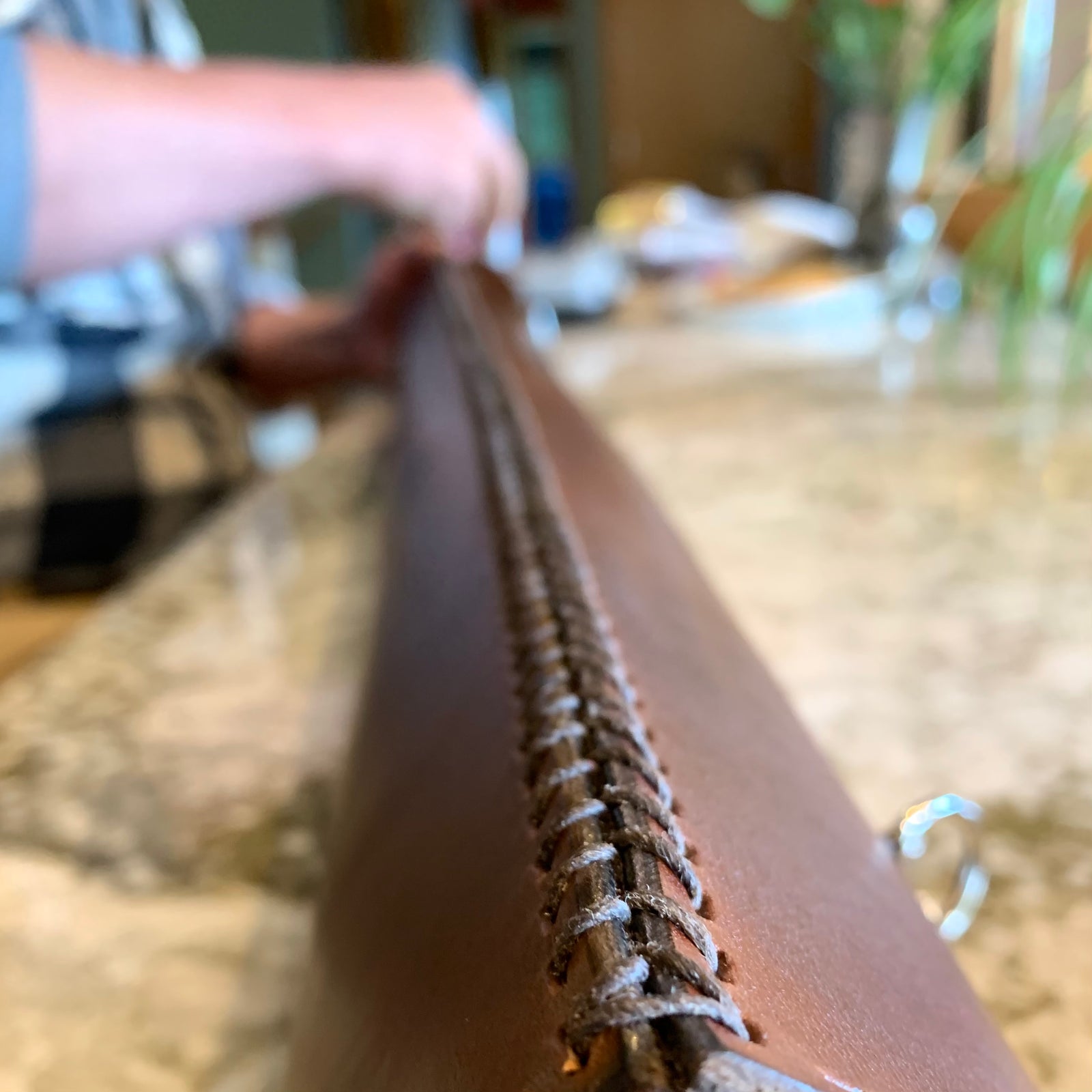

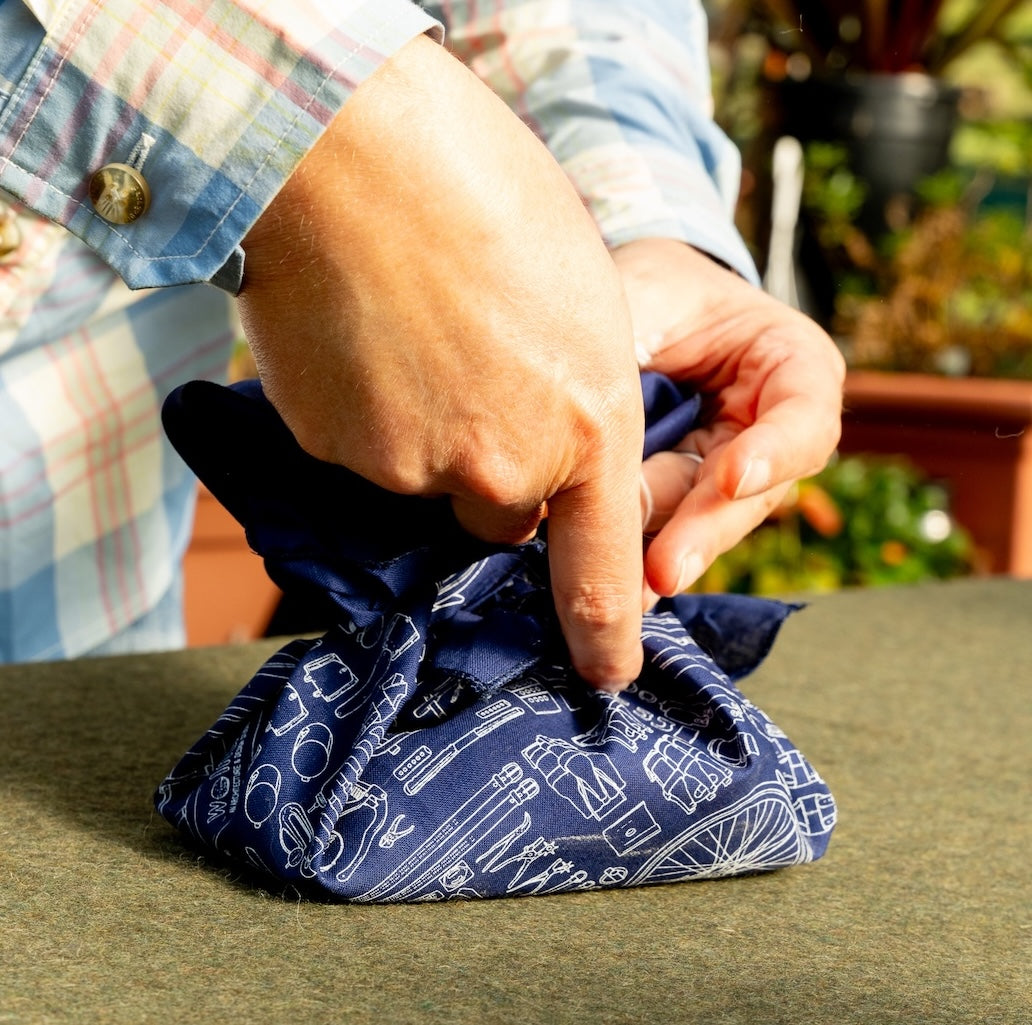








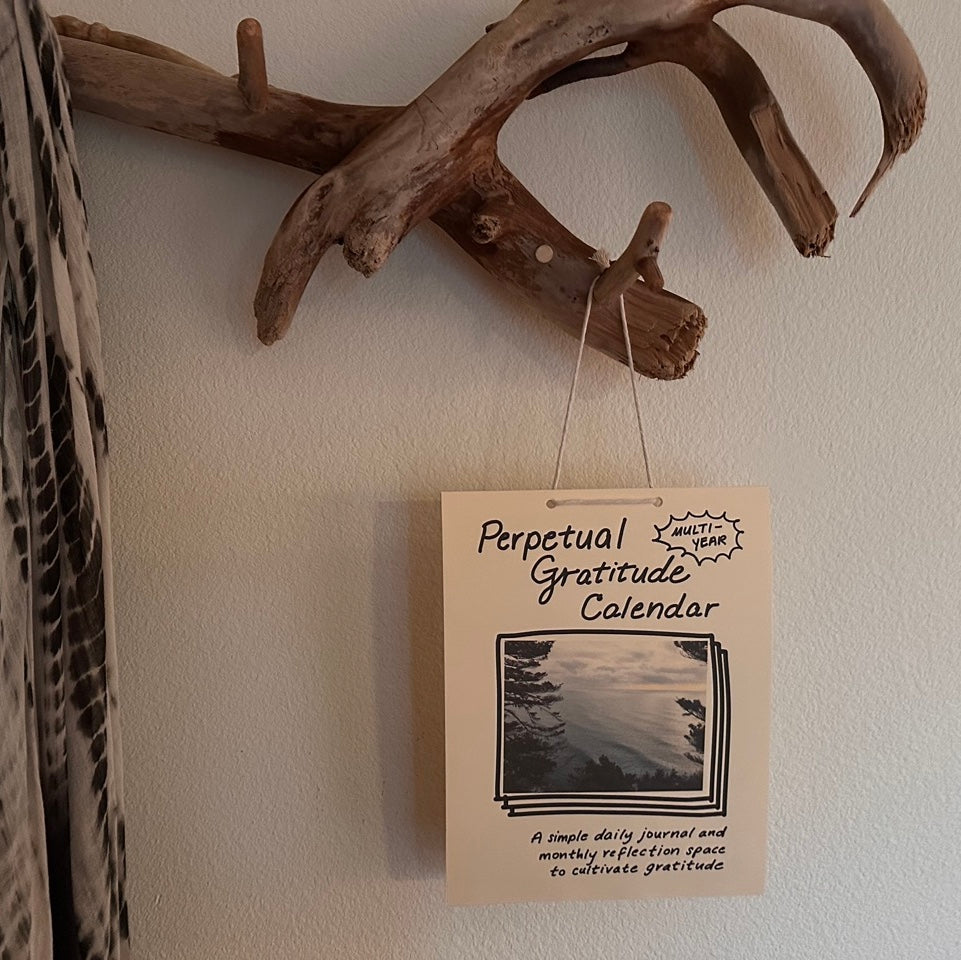
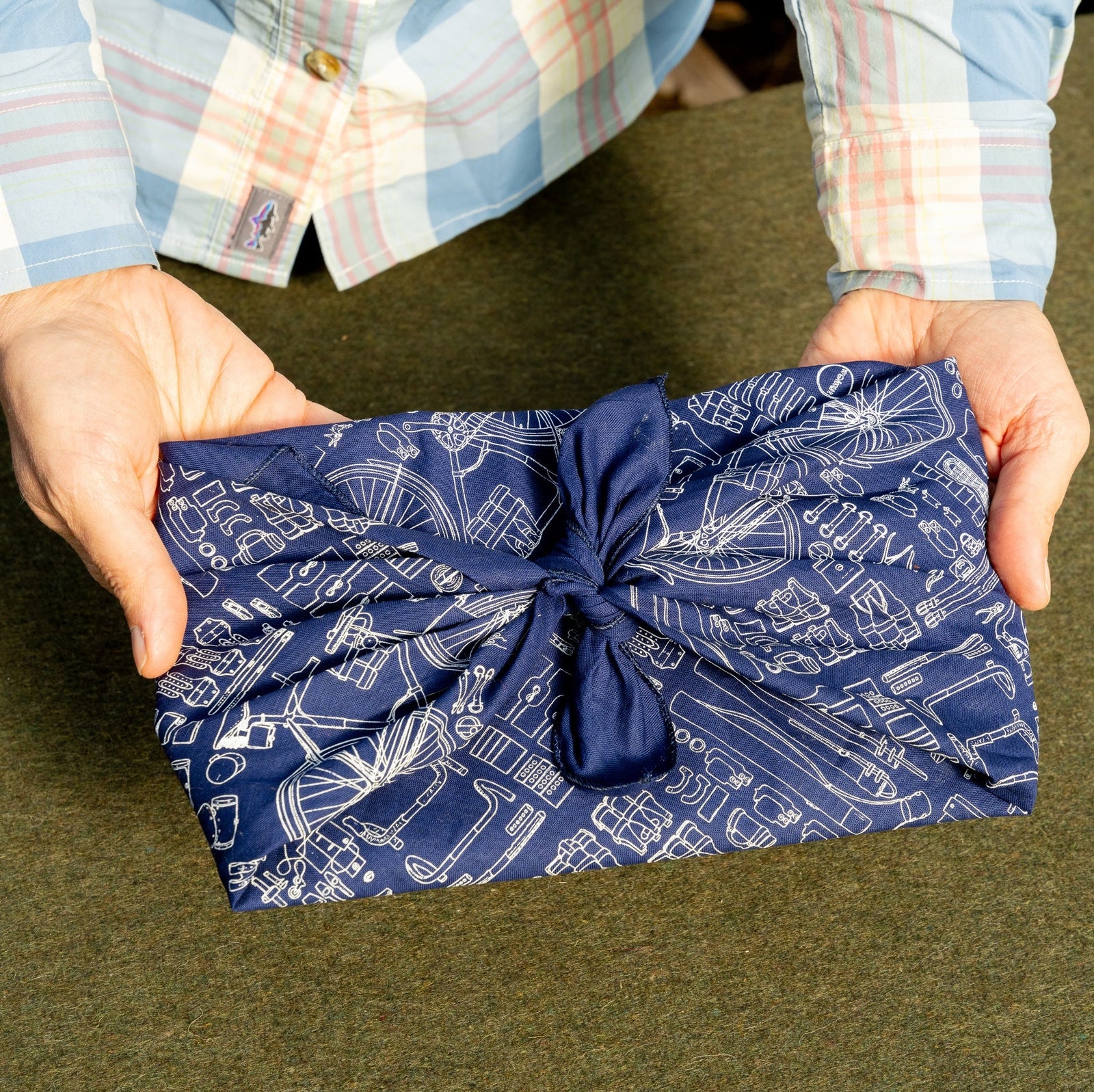
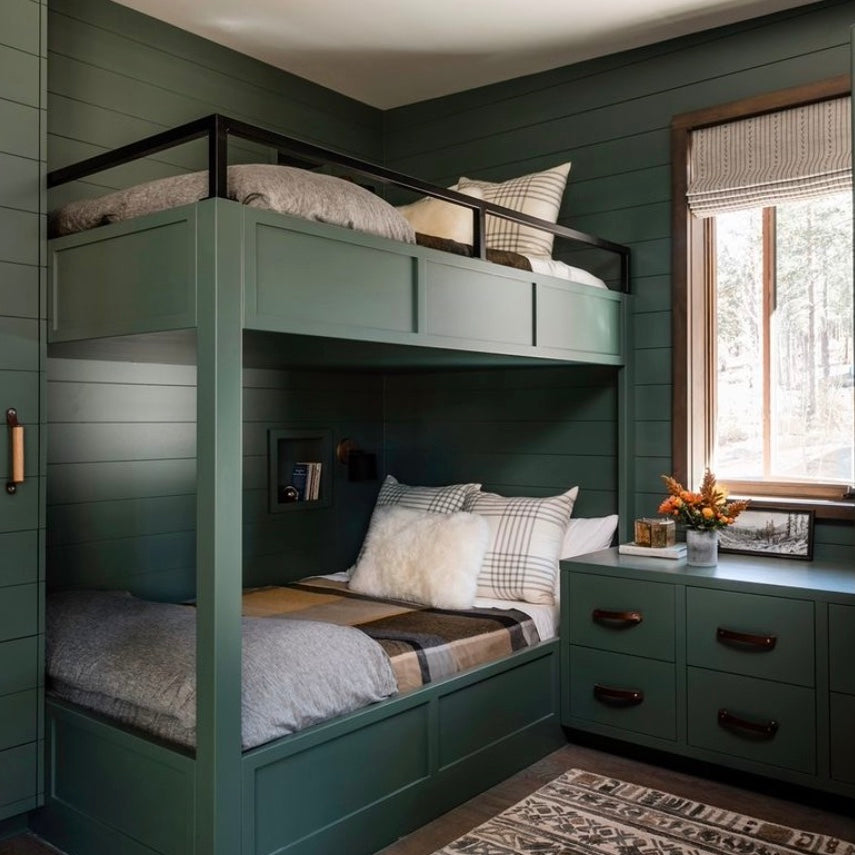

Leave a comment (all fields required)